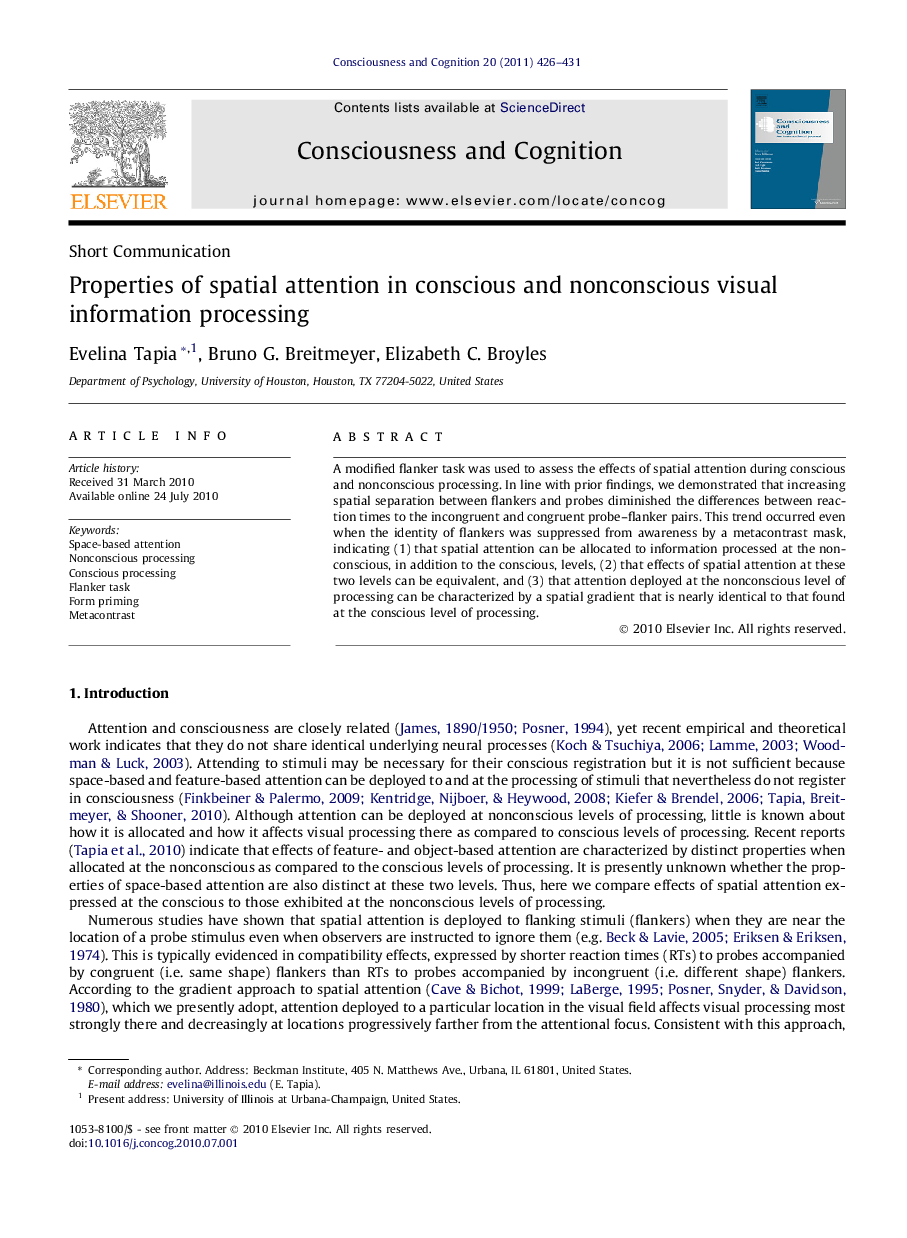| Article ID | Journal | Published Year | Pages | File Type |
|---|---|---|---|---|
| 927730 | Consciousness and Cognition | 2011 | 6 Pages |
A modified flanker task was used to assess the effects of spatial attention during conscious and nonconscious processing. In line with prior findings, we demonstrated that increasing spatial separation between flankers and probes diminished the differences between reaction times to the incongruent and congruent probe–flanker pairs. This trend occurred even when the identity of flankers was suppressed from awareness by a metacontrast mask, indicating (1) that spatial attention can be allocated to information processed at the nonconscious, in addition to the conscious, levels, (2) that effects of spatial attention at these two levels can be equivalent, and (3) that attention deployed at the nonconscious level of processing can be characterized by a spatial gradient that is nearly identical to that found at the conscious level of processing.
